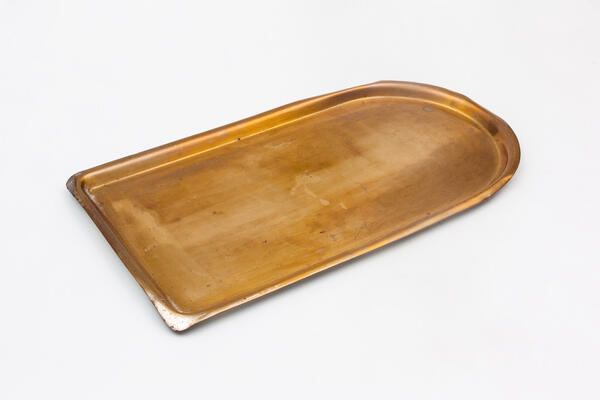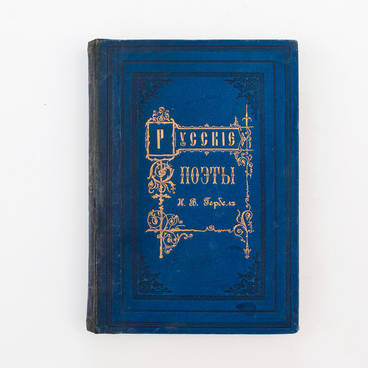The charcoal-burning samovar stands on a metal tray in the dining room of the House-Museum. This samovar is a duplicate of the item that belonged to the Ulyanovs in the 1880s, but the tray itself is original. Its last owner was Anna Ulyanova-Elizarova, the eldest daughter of the Ulyanovs.
In the summertime, the Ulyanovs often took the samovar out to the summer house, which was situated in the garden, and in the wintertime, they had tea in the dining room. During the tea party, they always put the samovar on a metal tray. It prevented the heated legs of the samovar from burning and scratching the table surface.
Samovar trays had to be heat-resistant, that is why they were made of metal. Initially, masters used copper, but since the 18th century, it became more expensive, and production of such items ceased to be mass. For those who could not afford a copper tray, they made them from a cheaper metal. The alternative was brass — an alloy based on copper with an addition of zinc from 5% to 45% of the total amount, depending on the brand of alloy. In a special vessel made of refractory clay, a crucible, copper ingots were placed and heated in a furnace and raised to red heat. When the copper began to melt, the required quantity of zinc was added bit by bit. Coke, charcoal, or coal was used as fuel. When molten copper and zinc mixed well, they were cast into closed iron pots — molds for ingot production.
The pliable brass was easy to work with — it could be rolled from the ingot into thin sheets, of which trays were usually made. The brass was given the desired shape by blows of a hammer; if necessary it could even be drawn into a wire. Sometimes tin or manganese was added to the brass for greater resistance to hot steam and corrosion, iron for hardness, and other metals.
The brass tray from the collection of the Lenin House-Museum was made in the form of a vertical sheet of metal with a low two-step rim. The back of the tray is rectangular to hold a samovar, while the front, where a gargle bowl or cup was placed, is rounded. The item is not decorated.
The tray was donated to the museum by Klavdia Anokhina, who lived with Anna Ulyanova-Elizarova in her Moscow apartment on Manezhnaya Street from 1930. After Anna died in 1935, Anokhina kept her belongings.
In the summertime, the Ulyanovs often took the samovar out to the summer house, which was situated in the garden, and in the wintertime, they had tea in the dining room. During the tea party, they always put the samovar on a metal tray. It prevented the heated legs of the samovar from burning and scratching the table surface.
Samovar trays had to be heat-resistant, that is why they were made of metal. Initially, masters used copper, but since the 18th century, it became more expensive, and production of such items ceased to be mass. For those who could not afford a copper tray, they made them from a cheaper metal. The alternative was brass — an alloy based on copper with an addition of zinc from 5% to 45% of the total amount, depending on the brand of alloy. In a special vessel made of refractory clay, a crucible, copper ingots were placed and heated in a furnace and raised to red heat. When the copper began to melt, the required quantity of zinc was added bit by bit. Coke, charcoal, or coal was used as fuel. When molten copper and zinc mixed well, they were cast into closed iron pots — molds for ingot production.
The pliable brass was easy to work with — it could be rolled from the ingot into thin sheets, of which trays were usually made. The brass was given the desired shape by blows of a hammer; if necessary it could even be drawn into a wire. Sometimes tin or manganese was added to the brass for greater resistance to hot steam and corrosion, iron for hardness, and other metals.
The brass tray from the collection of the Lenin House-Museum was made in the form of a vertical sheet of metal with a low two-step rim. The back of the tray is rectangular to hold a samovar, while the front, where a gargle bowl or cup was placed, is rounded. The item is not decorated.
The tray was donated to the museum by Klavdia Anokhina, who lived with Anna Ulyanova-Elizarova in her Moscow apartment on Manezhnaya Street from 1930. After Anna died in 1935, Anokhina kept her belongings.



